Last updated on May 2nd, 2022 , 11:48 am
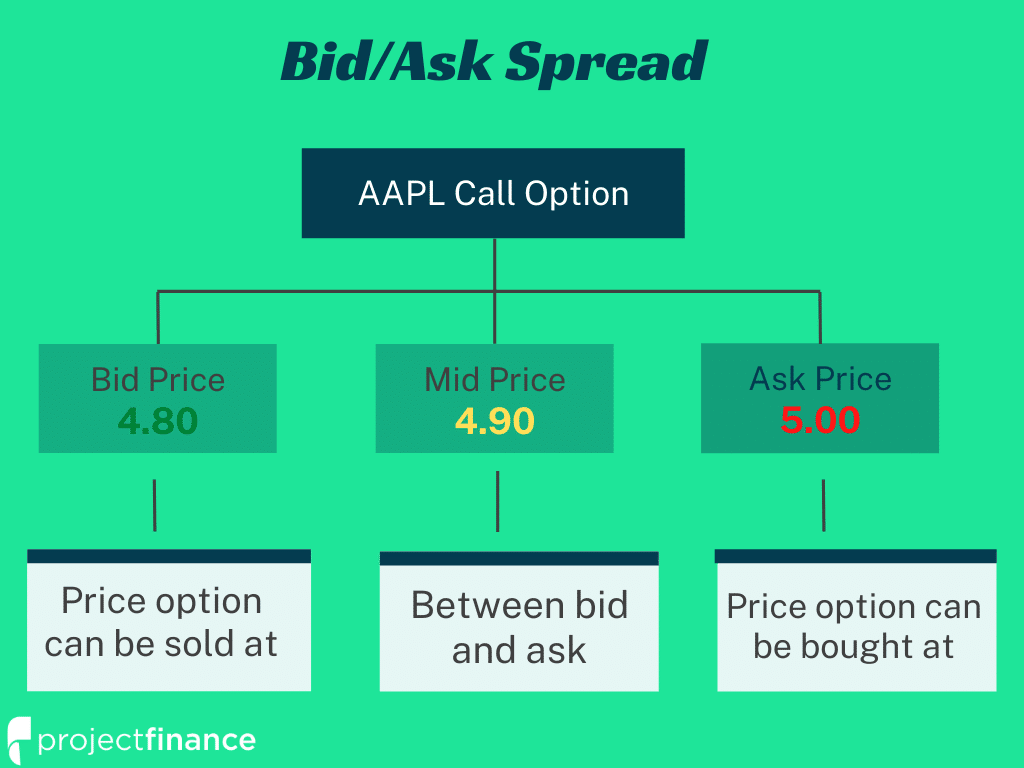
Bid-Ask Spread Definition: In the stock market, the “bid-ask spread” is the difference between the bid price and ask price for a security.
In this guide, you’re going to learn about the bid-ask spread, which is a crucial liquidity metric that should be examined before trading any stock or option (derivative). If you’d like, you can skip to a particular section by clicking on the section title.
Care to watch the video instead? Check it out below!
Jump To
"Bid and "Ask" Explained
Before trading any product in the market, it’s crucial to gauge the hidden cost (in addition to transaction cost) of entering and exiting a position in that product. The bid-ask spread can be used to assess the cost of trading a particular stock or option.
Before discussing the bid-ask spread, we need to talk about what the “bid” and “ask” prices are. The following visual explains what the bid and ask prices represent.
When trading a share of stock or an option, you can get filled on your order immediately if you sell at the bidding price or buy at the asking price. Therefore, the bid-ask spread tells you how much money you would lose if you purchased something at the asking price and sold it at the bidding price (sometimes referred to as “slippage”).
In this case, you’d have to buy at $3.50 or sell at $3.00 to get filled immediately. When purchasing at the ask and selling at the bid (or vice versa), the corresponding loss will be $0.50, which translates to $50 for 100 shares of stock or 1 option contract.
Ideally, you want to lose as little as possible when entering and exiting a position, which means trading products with a narrow bid-ask spread is preferred.

New to options trading? Learn the essential concepts of options trading with our FREE 160+ page Options Trading for Beginners PDF.
Bid and Ask Spread: Market Makers
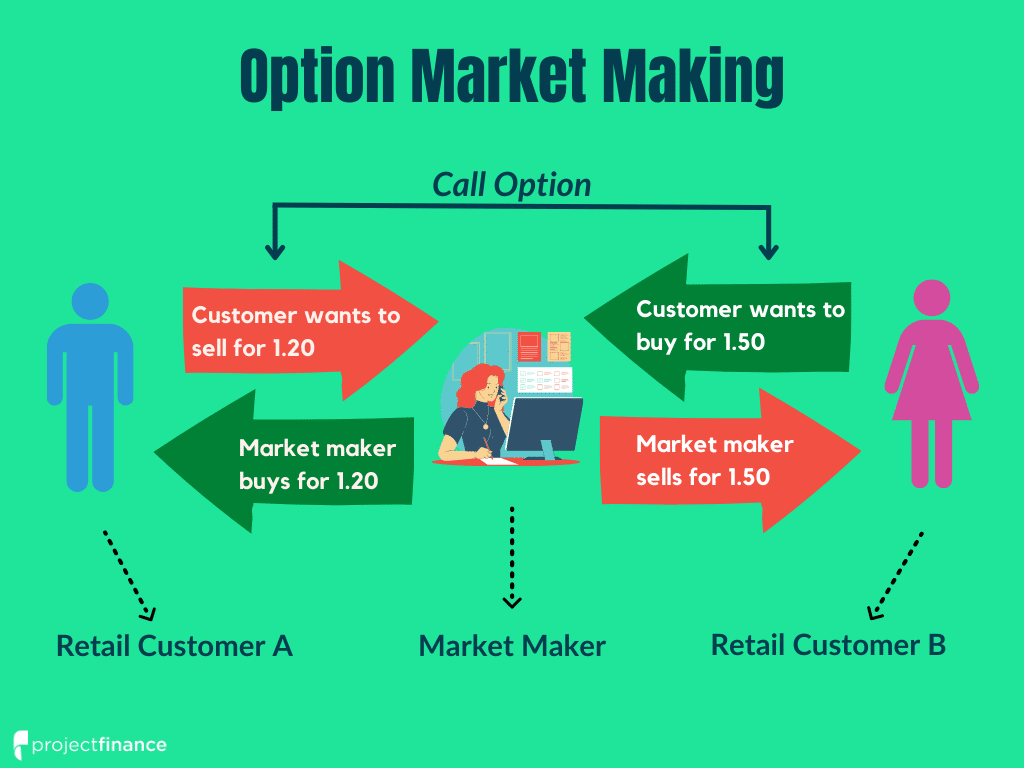
The function of a market maker is to provide market liquidity. These financial professionals accomplish this by standing ready to both buy the bid price and sell the asking price for the security they specialize in.
They profit from the “spread”, or the difference between the bid and ask price. However, they are obligated to fill you at the best price.
Market makers provide liquidity on particular securities on various stock exchanges, such as the NYSE and the Nasdaq.
Market makers want retail order flow so paid, they are willing to pay brokers for the right to fill their customers orders in a system called payment for order flow.
Bid and Ask Spread Example
As an example, let’s look at some hypothetical bid-ask spreads for various trading products:
If a trader wanted to purchase a share of stock instantly, they would have to pay the asking price of $100.03. To immediately get out of the position, they would have to sell at the bid price of $100.02. As you can see, the loss on this transaction is $0.01 per share (not including commissions). With 100 shares, the loss would be $1 ($0.01 x 100). A $0.01 bid-ask spread is the best-case scenario and is an indication that a product is actively traded.
Now, regarding the call option, the asking price is $1.20 higher than the bid price, which means a trader would lose $120 from just buying the call at the asking price of $6.30 and selling the option at the bidding price of $5.10. Trading products with a bid-ask spread this wide is clearly not advised.
Lastly, the put option has a bid-ask spread of only $0.05, which is considered to be a narrow spread. In the case of buying at the asking price and selling at the bidding price, a trader would only lose $5 per contract.
Spread in Stocks vs. Options
When trading shares of stock, the bid-ask spread will often be a few pennies wide. However, a majority of stocks have illiquid options with wide bid-ask spreads. So, be more aware of the bid-ask spread when transacting in the option markets, and try to only trade options with bid-ask spreads less than $0.10, as it will save your trading account from “hidden” costs that can accrue to massive amounts over time.
At this point, you know and understand the implications of the bid-ask spread. Next, we’ll quickly discuss which options tend to have the widest bid-ask spreads so you can avoid trouble when trading options.
Which Options Have the Widest Bid-Ask Spreads?
Options with strike prices further away from the stock price typically have wider bid-ask spreads.
To visualize this, we plotted a snapshot of the closing bid-ask spreads for calls and puts on SPY (S&P 500 ETF), which is an ETF that has one of the most actively traded option markets. We used options from early 2022 that had approximately 60 days to expiration:
As we can see here, in-the-money calls and puts have the widest bid-ask spreads (approximately $0.50 for the deep-in-the-money options). The options with the narrowest bid-ask spreads are the at-the-money options (strike prices near $205), and the out-of-the-money options. However, it’s worth noting that the out-of-the-money options have narrower bid-ask spreads because the option prices are cheaper (a $0.05 option couldn’t have a $0.50 bid-ask spread).
Bid-Ask Spreads of Long-Term Options (LEAPS)
Now, let’s look at the bid-ask spread of the same strike prices in the expiration that’s nearest to 365 days to expiration:
Right off the bat, we can see that the at-the-money 365-day options have a bid-ask spread near $0.20. These long-term options are known as “LEAPs”. The same options with 60 days to expiration had bid-ask spreads near $0.05. Regarding the in-the-money options, the bid-ask spread is slightly narrower in the 365-day options, which could be explained by higher trading volume in the long-term in-the-money options. Either way, it’s clear that the minimum bid-ask spread is four times wider in the 365-day options than in the 60-day options.
Spreads vs. Market Volatility
As mentioned previously, bid-ask spreads widen when market volatility picks up. To illustrate this, we plotted the average at-the-money bid-ask spread of SPY options on each day between August 3rd, 2015, and September 18th, 2015. We used the September 2015 expiration cycle:
As we can see, there’s a clear relationship between market volatility (as indicated by the VIX Index) and the bid-ask spreads of options on SPY. While only SPY is used as an example in the visual above, the same concept applies to other stocks in the market as well.
In this example, it’s important to note that the bid-ask spread increased from $0.025 to $0.15 as market volatility increased, but these were the closing bid-ask spreads. When the market opened on August 24th, the bid-ask spreads of SPY options were between $2.00 and $5.00 because the market had opened down 5%. However, the spreads narrowed throughout the day.
So, if you find yourself in a situation where the market is going to open significantly lower than the previous day, expect the bid-ask spreads to be wide in the first couple hours of the trading session.
What Is The Effective Spread?
Generally speaking, the bid and ask prices you see listed for a particular security are not the true market. This is often a wider spread than the true spread. You can often fill trades (particularly option trades) better than the listed market price.
This is because of price improvement.
The below formula (from Wikipedia) shows the equation to compute the “effective spread”.

Option Order Types
There are four primary types of option orders:
Limit orders ensure both buy price and sell price, but not execution. These order types are not filled until your “limit price” is reached. To get filled fast, limit orders set at the midpoint are recommended.
Market orders ensure that you will be filled immediately. You will sometimes buy at the lowest ask price and sell at the highest bid price in a market order. These order types are dangerous in options trading, especially in less liquid options.
Stop-loss orders trigger a market order when your stop price is breached.
Stop-limit orders trigger a limit order when your stop price is breached.
Bid-Ask Spread FAQs
Ideally, you want a very tight bid-ask spread. With a wide bid-ask spread, you will forfeit the difference between these two prices when entering and exiting positions.
If an option is bid at 1.20 and offered at 2, you will lose that 0.80 in value when you enter and then later exit the trade. Tight bid-ask spreads make for more efficient markets.
Spreads do indeed count as day trading. The more legs you have in your spread, the more transactions you will have. Day trading spreads in accounts under 25k are not recommended as this is the threshold to become a pattern day trader.
Next Lesson
Additional Resources

About the Author
Chris Butler received his Bachelor’s degree in Finance from DePaul University and has nine years of experience in the financial markets.
Chris started the projectfinance YouTube channel in 2016, which has accumulated over 25 million views from investors globally.
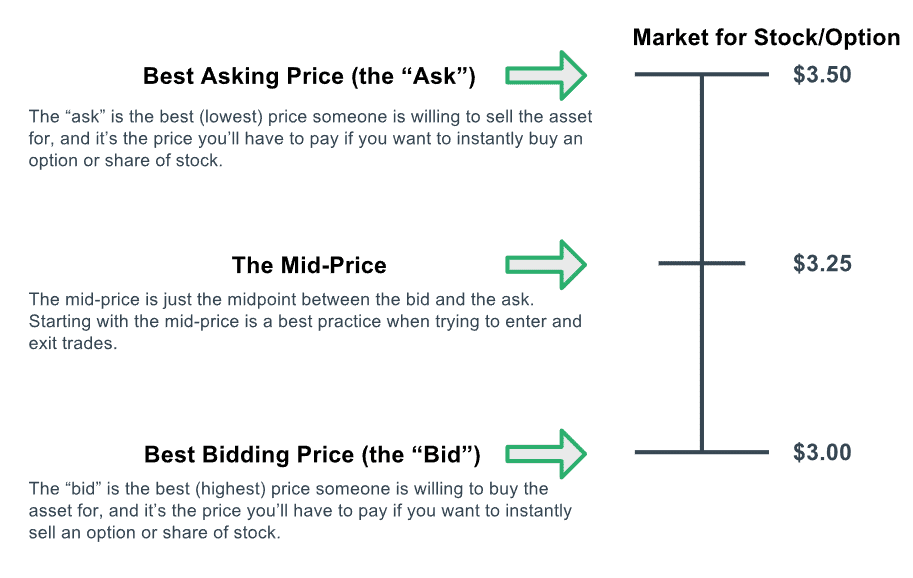

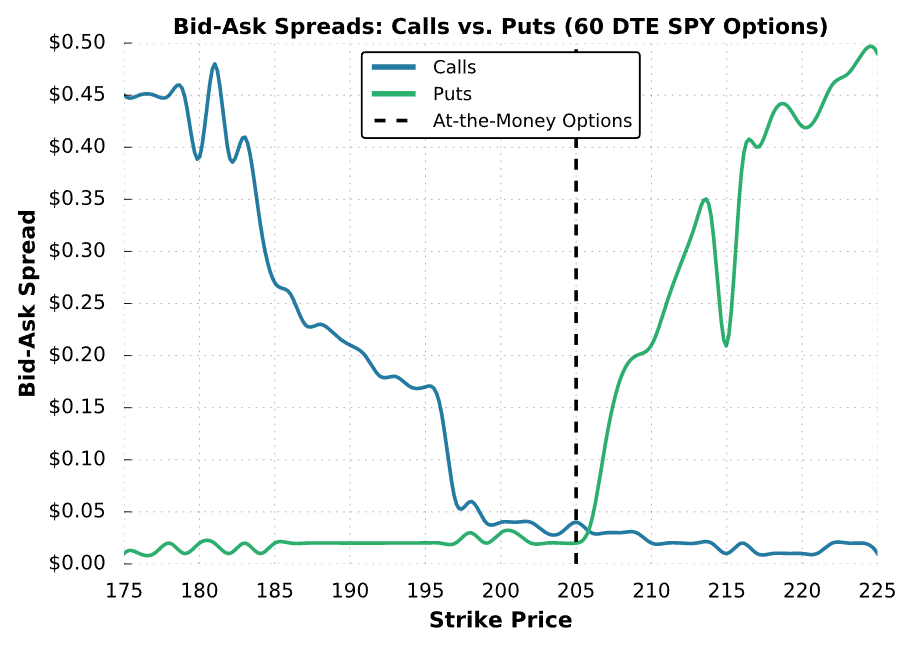
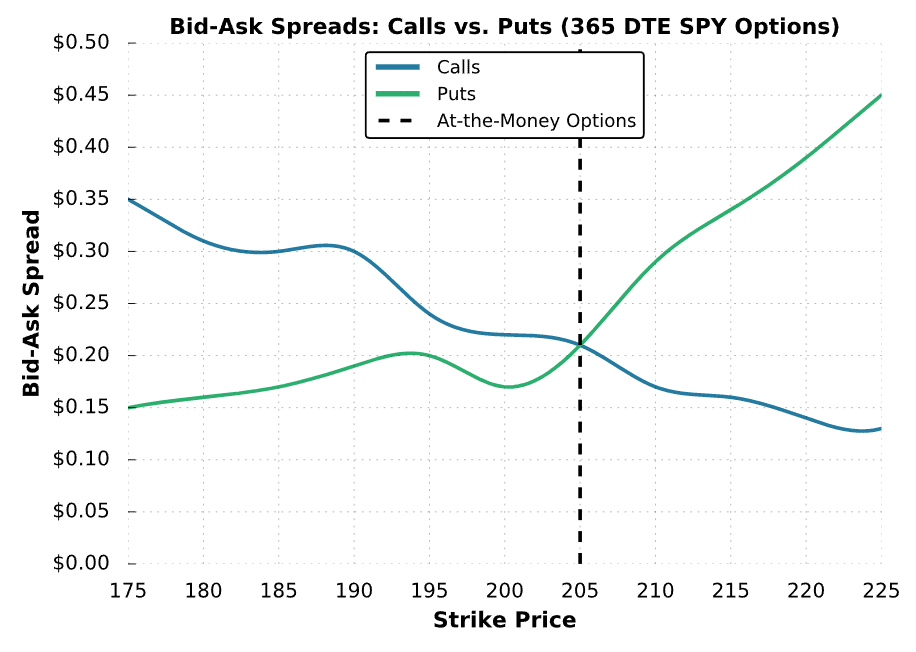
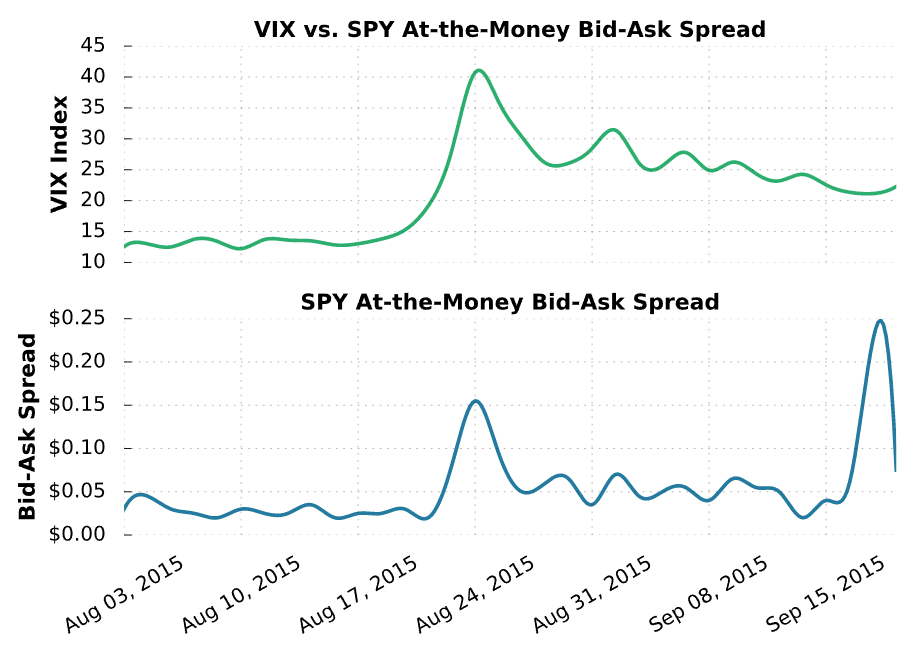




2 thoughts on “The Bid-Ask Spread Explained: Options Trading 101”
Thanks for the article!
So how often can you get filled at the “mid-price”? Sometimes I get filled here, other times I don’t. Any idea why?
Thanks for the question Elizabeth!
I would say the most important factor in determining whether you get filled at the midpoint is liquidity. How many market makers are there in that security? What is the stock volume like? What is the volume/open interest in the particular option(s) you are trading? What is the size of the bid-ask spread?
A lot of variables here!
Mike